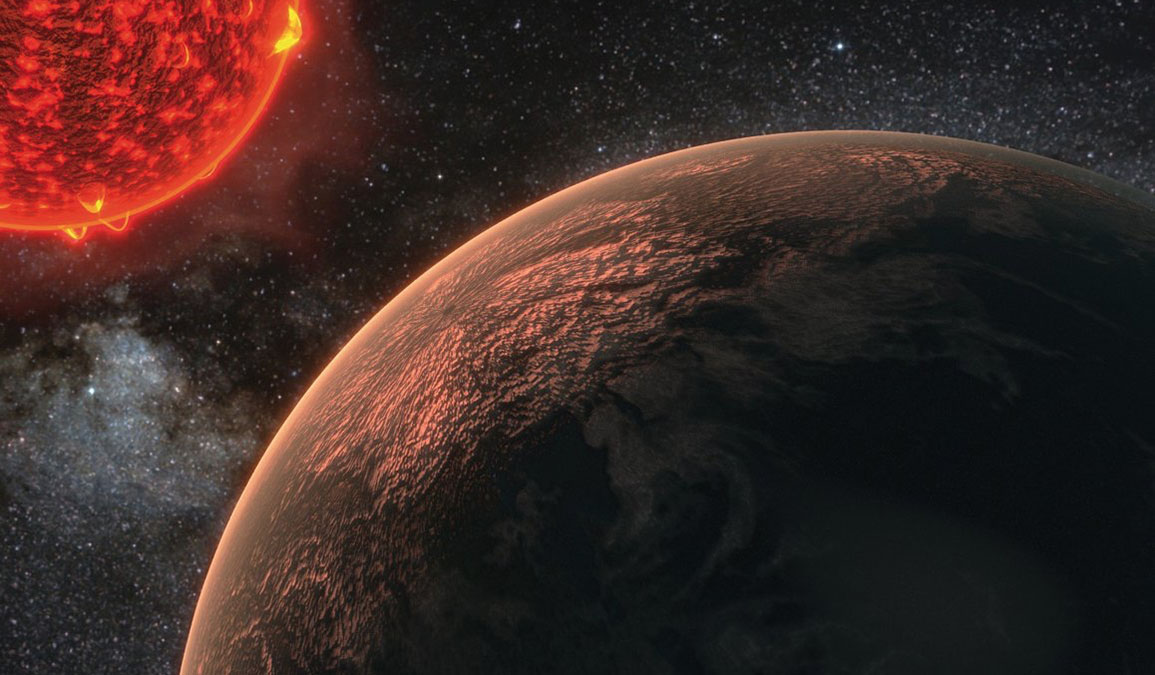taking a trip to gliese 581d

Gliese 581d is a large, mostly rocky planet about 20.3 light years away. It’s claim to fame? It’s at just the right distance from its parent star to have liquid water on its surface. Because it’s thought to have formed farther than its 83.6 day orbit, 581d should’ve had plenty of ice to form large, deep oceans as it warmed up on its way towards its sun. Take into account the seeming abundance of organic compounds in space and you have an environment where life can take hold, right? Well, it’s not quite that straightforward. Though 581d could be home to alien organisms, its climate would be extremely harsh and only very tough, simple creatures could survive the rigors of this strange world.
Imagine landing on Gliese 581d on the shore of a large ocean that’s supposed to cover a sizeable part of its surface. You would immediately feel two things. The first would be the tremendous gravity. A human ordinarily weighing 160 lbs would instantly get an extra half a ton heavier. The stress would be more than twice what astronauts on the space shuttle experience during lift-off to orbit. Since the human body can only deal with this much force exerted on it for a very short period of time, there are all sorts of serious dangers associated with being exposed to gravity that intense. Taking even one step would be impossible. Your muscles wouldn’t get any stronger to accommodate all that additional weight and trying to move hundreds and hundreds of pounds while the same stress is pushing you down would be a Sisyphean task.
The second thing you would quickly note would be the wind. Gliese 581d is so close to its star that it’s tidally locked. One of its hemispheres is always facing its sun while the other is always shrouded in the darkness. For a while, scientists thought that the dark side would be frozen solid, but recent studies suggest that a planet with a thick atmosphere would be able to circulate heat around the entire world. But the temperature differences would create powerful global windstorms. On tidally locked gas giants, the combination of hot air on the day side and frigid air on the night side fuels supersonic gusts. The weather would be much calmer on 581d, but its winds would still howl. You might also want to stay away from the equator. Constant heat over billions of years could spawn an endless cycle of major storms there.
Don’t be surprised if the sky’s color palette is muted. Gliese 581 is a red dwarf which emits most of the energy it produces as infrared radiation rather than as visible light. The exact colors depend on the gases that make up 581d’s atmosphere, something we don’t know yet. And speaking of colors, the ocean might not be blue either. Depending on what minerals saturate the water and what living things make their homes in its depths, safe from weather and infrared beams, it could have a very different hue. It’s at the bottom of these alien oceans that creatures could feed on by-products of volcanism and find an oasis on what’s otherwise a harsh and bizarre planet.





